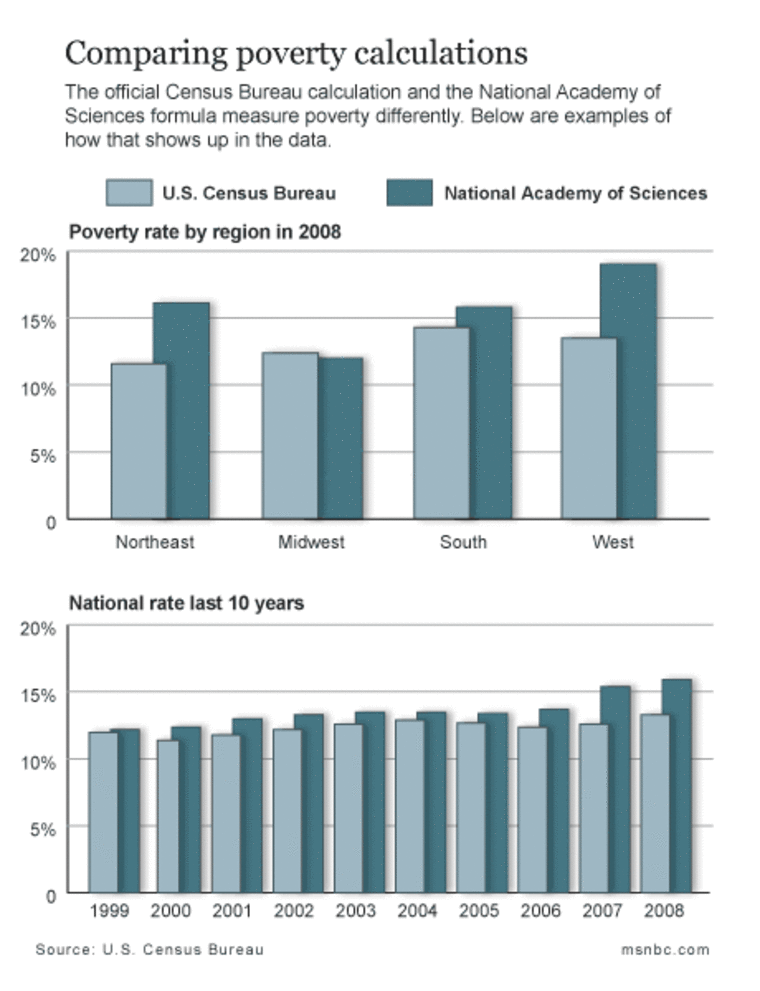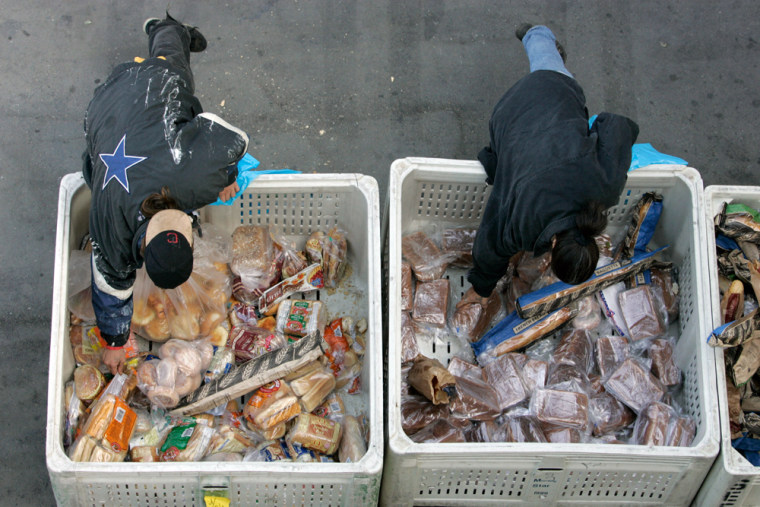How should poverty in America be counted? The Census Bureau uses a calculation that put the number at 39.8 million last year. But a revised formula that lawmakers are considering adds more than 7 million Americans to that number.
If the revised formula is adopted, a more refined picture of American poverty could emerge that would capture the everyday costs of necessities besides food.
A change also could upend long-standing notions of those in greatest need and lead to shifts in how billions of federal dollars for the poor are distributed for health, housing, nutrition and child care.
The Census Bureau on Monday released national and regional estimates based upon the revised formula, as well as variations of the formula, because of the interest expressed by lawmakers and the Obama administration in seeing a fuller range.
The revised formula, based on recommendations from experts at the National Academy of Sciences, shows the poverty rate to be at 15.8 percent, comprising nearly 1 in 6 Americans. That's higher than the 13.2 percent under the current formula used by the government.
The current formula, which dates to the 1960s, defines poverty as total income that falls below three times the annual cost of groceries. So for a family of four, the poverty level is now a one-size-fits-all $21,834.
And since only grocery costs are factored in, the official poverty rate has varied little over the years.
The academy's formula factors in expenses such as clothing, housing and out-of-pocket medical costs, as well as geographic differences in housing costs. It includes as income non-cash aid such as food stamps, public housing and free school lunches.
For 2008, the Census estimated the poverty threshold under that formula would be $24,755. Many of those who would be newly defined as poor under this formula are older Americans with growing out-of-pocket medical expenses.
Others have argued for adding health care benefits to the calculation of income, but the academy said doing so "would greatly complicate the poverty measure and cloud its interpretation."
Food stamps softened hardship?
Arloc Sherman, a researcher at the nonprofit Center on Budget and Policy Priorities, said that because the revised formula factors in non-cash government aid, the amount of increase in poverty from 2007 to 2008 was generally smaller compared with the increase under the current formula.
"Food stamp participation rose during the first year of recession and appears to have softened what could have been an even greater increase in financial hardship," he said.
Sherman said the revised formula could take on greater importance in measuring poverty for 2009 as more Americans take advantage of tax credits and food stamps under the federal stimulus program. About 36 million Americans are currently using food stamps, an all-time high partly attributable to the recession and the resulting loss of jobs.
At the National Center for Policy Analysis, a nonprofit focused on private alternatives to government regulation, analysts agree that the academy formula is an improvement.
"It's very difficult to determine who's in poverty based on the national one-size-fits-all" calculation used by the Census Bureau, said senior policy analyst Pamela Villarreal, so "the bottom line is there have been some positive reforms to the formula."
But the revised formula does have some problems, she said. For instance, it doesn't include health care benefits, which proportionally favor the poor and elderly more than other Americans, Villarreal said. Adding the thousands of dollars in such benefits to incomes when calculating poverty would place more people above the poverty line, she said. The academy formula "still overstates the poverty rate by about 25 percent," she added.
White House could act on its own
Legislation pending in Congress would require use of the academy approach, but variations in the formula could easily creep in as lawmakers weigh in.
It's also possible that the White House could act on its own, especially after President Barack Obama indicated during the presidential campaign that he supported an improved measure as part of a broader strategy to reduce poverty.
"The current poverty measure does a very bad job of measuring the impact of quite a few of our anti-poverty policies," said Rebecca Blank, the Commerce Department's undersecretary of economic affairs. "It isn't meaningless, but it isn't complete."

How do the formulas by the Census and the National Academy of Sciences compare in specific areas? Here are some examples:
- Elderly: The academy formula puts 18.7 percent of Americans 65 and older, or nearly 7.1 million, in poverty, compared to 9.7 percent, or 3.7 million, under the traditional measure. That's due to out-of-pocket expenses from rising Medicare premiums, deductibles and a coverage gap in the prescription drug benefit.
- Americans 18 to 64: The academy formula puts 14.3 percent, or 27 million, of these Americans in poverty, compared to 11.7 percent under the traditional measure. Many of the additional poor are low-income, working people with transportation and child-care costs.
- Children. The academy puts poverty in this group lower, at 17.9 percent, or roughly 13.3 million, compared to 19 percent under the traditional measure. That's because single mothers and their children disproportionately receive non-cash aid such as food stamps.
- Ethnic groups. The academy's poverty rates were higher for non-Hispanic whites (11 percent), Asians (17 percent) and Hispanics (29 percent) when compared to the traditional measure. For blacks, poverty remained flat at 24.7 percent, due to the cushioning effect of non-cash aid.
- Regions. Under the academy's formula, the Northeast and West saw bigger jumps in poverty, due largely to cities with higher costs of living such as New York, Boston, Los Angeles and San Francisco.
